Against snipers and optics. Scanning detector of surveillance equipment "SOSN-N"
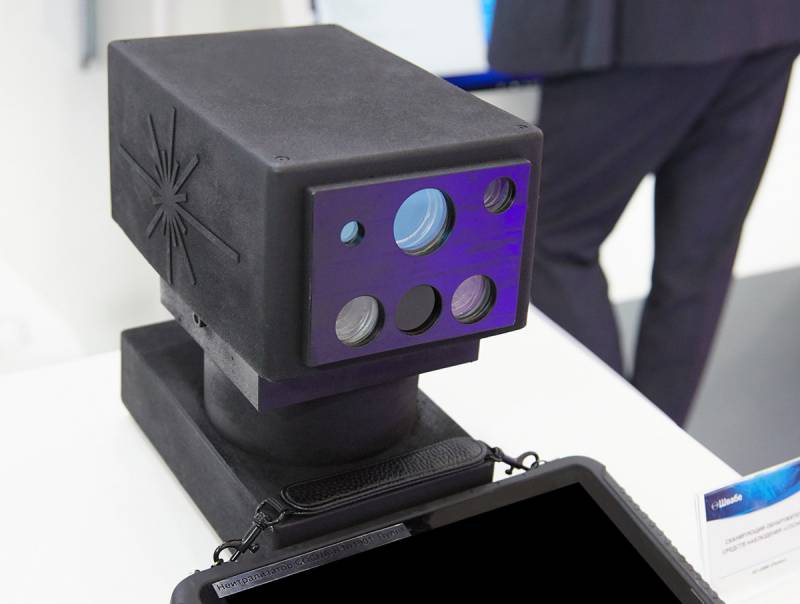
Detector "SOSN-N"
Over the past few years, the Russian defense industry has been showing the latest detector/neutralizer of surveillance equipment, SOSNA-N, at specialized exhibitions. Not long ago, a batch of such complexes ended up in the Special Operation zone. In real combat conditions, they demonstrated their capabilities and potential.
Complexes at the front
The TASS agency reported on the practical use of SOSNA-N products on September 29. It received information about this from an unnamed source in the domestic defense-industrial complex. At the same time, the disclosed information is not complete and detailed.
It is reported that the Russian army has acquired a batch of SOSNA-N complexes. They were transferred to special forces units involved in the current Special Operation. The products were used in combat zones and successfully passed this test.
In a report from TASS, the SOSNA-N product is mentioned as an anti-sniper complex. The main features and characteristics of this system are also given, and optical sighting devices of sniper rifle systems are given as one example of a target for it. Apparently, the detector-neutralizer was used primarily to combat enemy snipers.
"SOSNA-N" coped with the assigned tasks and successfully passed the combat test. Now we should expect that the army and other structures will draw conclusions and begin to more actively acquire such equipment. It can be used not only on the battlefield, but also in other situations.
Detection and Neutralization
Optical-electronic complexes of the SOSNA series (Scanning Detector of Surveillance Equipment) are being developed by the Moscow Polyus Research Institute named after. M.F. Stelmakh, part of the Shvabe holding (Rostec State Corporation). The first work in this direction began quite a long time ago, and back in the tens, the Institute presented the first detector “SOSNA”.
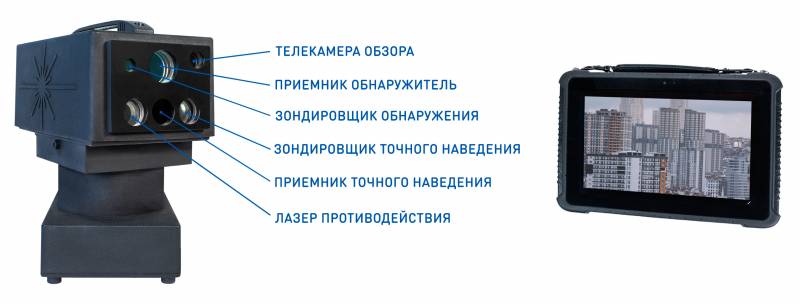
Layout of optical instruments
As the name implies, this product was intended to monitor a designated area and detect optical devices. Information about the found target was given to the operator and could be used for target designation of other systems and complexes.
At the Army-2020 military-technical forum, a deep modernization of the existing system called SOSNA-N (Neutralizer) was presented for the first time. Due to the introduction of new elements and devices, as well as updating the control software, the complex was able not only to find, but also to suppress / neutralize enemy optics.
The development organization believed that SOSNA-N would be of interest to a wide range of customers - the military, intelligence services and civilian organizations. Great commercial prospects were determined by the high characteristics of the system and its low cost. In addition, the absence of direct competitors is important: the Polyus Research Institute notes that there are no systems with the capabilities of the SOSNA detectors in our country or abroad.
The SOSNA series detectors were previously regularly demonstrated at specialized exhibitions, but their commercial success has not yet been reported. Only a few days ago, at the end of September, it became known that new products had entered the army and were tested under Special Operations conditions.
Robotic complex
"Scanning detector of surveillance equipment - neutralizer" type "SOSN-N" is a specialized optical-electronic station with characteristic features and functions. It is distinguished from other OES by its ability to detect and track characteristic targets, as well as the possibility of their optical suppression. Such capabilities are determined by the design and composition of the device equipment.
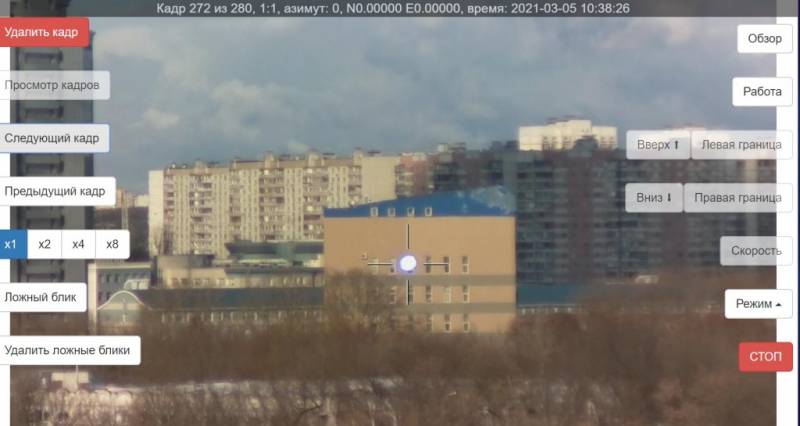
"SOSNA-N" detected binoculars from a distance of 700 m
In general, the SOSNA-N complex consists of two elements - the optical station itself and the control panel. The detector station is a compact device in the form of a fixed base with a rotating head that accommodates optical devices. The dimensions of the station do not exceed 250x250x150 mm. The weight of the product is only 4,6 kg, which allows it to be carried manually and quickly placed in the required position. The device requires a 12 V power supply.
A rugged tablet computer with the necessary software is used as a remote control. Remote control weight – 1,1 kg. The station and remote control can be connected via cable or use a Wi-Fi radio channel.
The common body of the detector houses six optical devices with different functions. These are a surveillance camera, a detection probe and receiver, a precision guidance probe and receiver, and a neutralization laser emitter. There are drives for rotating the head around a vertical axis within 180° to the right and left of the neutral position. There is no vertical guidance.
During operation, in automatic or manual mode, SOSNA-N constantly turns the head and scans a given sector, illuminating it with two IR laser probes. Optical instruments in the sector are detected by reflections and glare of the probing radiation, recorded by two receivers. Due to this, the direction to the target is determined, and a separate accurate detection channel improves overall performance. Can work at any time of the day.
At the operator’s command or in automatic mode, the optics are suppressed using a laser - a beam of limited power in the visible range is used. Such illumination actually excludes the effective use of optical sights, observation devices, EOS, etc. The effective range is up to 3 km.
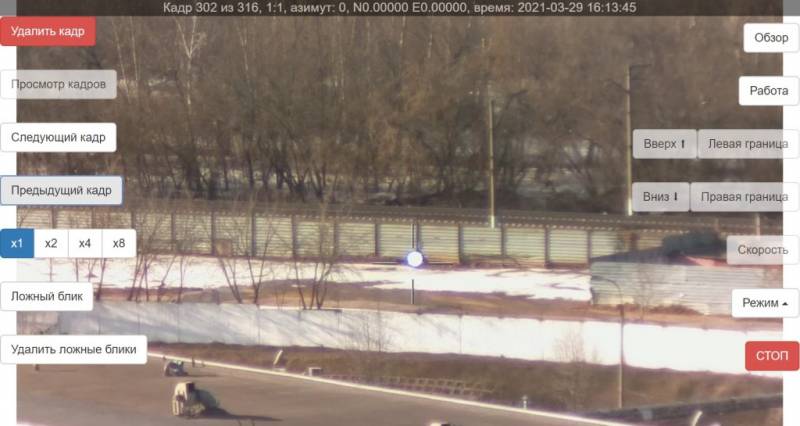
Flash from a TV camera at a distance of 300 m
The SOSNA-N detector-neutralizer can be controlled by an operator or operate in fully automatic mode. There is a function for automatically cutting off interference and foreign objects that create glare, like optics. The device can work independently or as part of larger security systems. Depending on the method of application, target designation data can be transmitted to different consumers.
Applications
According to the development organization, SOSNA-N can be used to protect a variety of stationary structures - industrial, infrastructure and administrative facilities. It is also possible to use it in the protection of moving objects, such as cars, convoys, etc. At the same time, the use of optics for surveillance, information collection, etc. is suppressed.
The military potential of the SOSNA-N product is also great. With its help, you can detect and suppress optics on equipment and weapons. First of all, the device is considered as a means of countering snipers and ATGM crews, which critically depend on optical devices. It is also possible to work for other purposes. Thus, the device will be able to detect camouflaged equipment with partially open optics.
According to the latest news, in the Special Operation zone, several SOSNA-N devices were used specifically to combat snipers. This type of application allows you to fully utilize the potential of the detector/neutralizer. At the same time, the complex is capable of operating and performing counter-sniper tasks both independently and together with living soldiers.
When fighting against snipers, SOSNA-N is placed in a camouflaged position and monitors the specified sector of space. When a suspicious object is detected, the device can transmit its coordinates and image to the operator. Further actions depend on the chosen method of fighting the enemy. An enemy sniper can become a target for the laser and lose the ability to aim fire. In addition, data about his position can be transmitted to his sniper or more powerful firepower.
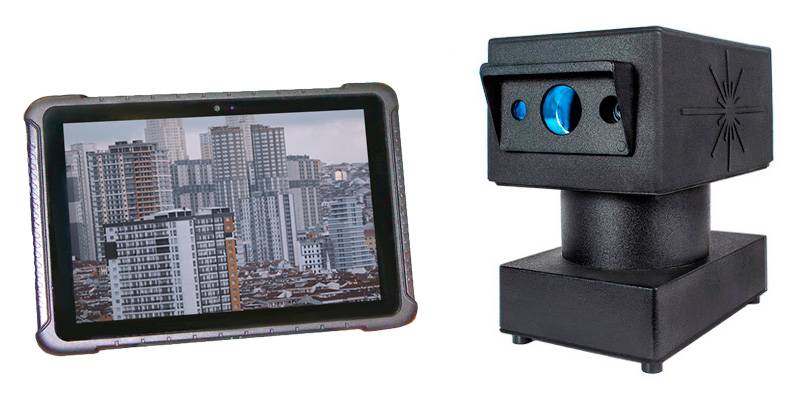
Device "SOSN" without the possibility of neutralizing optics
Both application algorithms give clear positive results. In the first case, SOSNA-N forces the sniper to leave the exposed position and, at least temporarily, stop working. In the second, his activities are stopped in a radical way. The same applies to opponents of other specialties who use optics - reconnaissance observers, ATGM operators, etc.
From exhibitions to practice
Thus, another modern domestic development has gone beyond the exhibition pavilions and testing grounds, and also entered the zone of real combat operations. Reportedly, the SOSNA-N scanning detector-neutralizer was tested by special forces and successfully completed its job.
Now we can expect that SOSNA-N products will become more widespread in our army and law enforcement agencies. It is also possible to modernize the original system taking into account the experience of real combat use. It is likely that the redesigned detector/neutralizer will be larger and more powerful, able to detect and suppress targets at a greater distance, etc. However, even in its current form, SOSNA-N meets the basic requirements and copes with its tasks.
Information